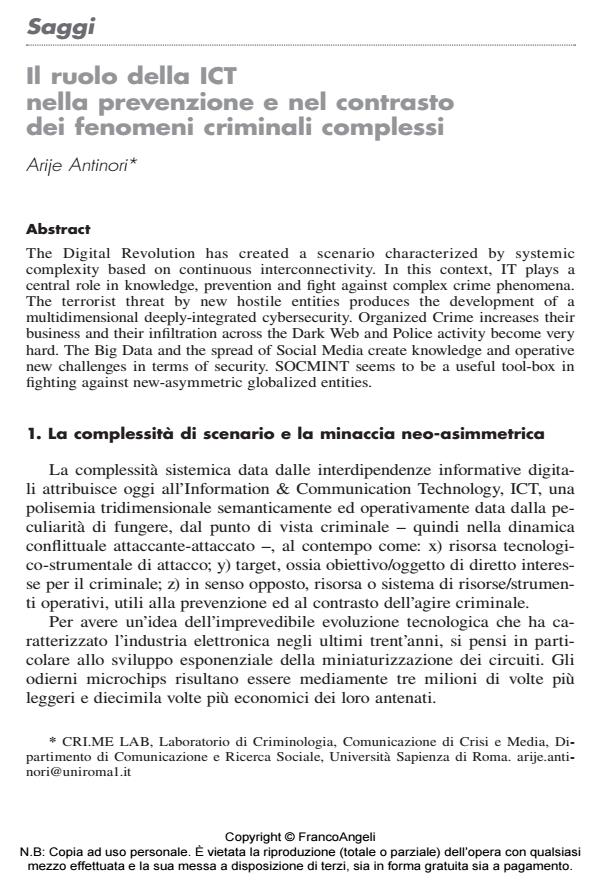Il ruolo della ICT nella prevenzione e nel contrasto dei fenomeni criminali complessi
Titolo Rivista SICUREZZA E SCIENZE SOCIALI
Autori/Curatori Arije Antinori
Anno di pubblicazione 2014 Fascicolo 2014/1
Lingua Italiano Numero pagine 15 P. 23-37 Dimensione file 119 KB
DOI 10.3280/SISS2014-001003
Il DOI è il codice a barre della proprietà intellettuale: per saperne di più
clicca qui
Qui sotto puoi vedere in anteprima la prima pagina di questo articolo.
Se questo articolo ti interessa, lo puoi acquistare (e scaricare in formato pdf) seguendo le facili indicazioni per acquistare il download credit. Acquista Download Credits per scaricare questo Articolo in formato PDF

FrancoAngeli è membro della Publishers International Linking Association, Inc (PILA)associazione indipendente e non profit per facilitare (attraverso i servizi tecnologici implementati da CrossRef.org) l’accesso degli studiosi ai contenuti digitali nelle pubblicazioni professionali e scientifiche
The Digital Revolution has created a scenario characterized by systemic complexity based on continuous interconnectivity. In this context, IT plays a central role in knowledge, prevention and fight against complex crime phenomena. The terrorist threat by new hostile entities produces the development of a multidimensional deeply-integrated cybersecurity. Organized Crime increases their business and their infiltration across the Dark Web and Police activity become very hard. The Big Data and the spread of Social Media create knowledge and operative new challenges in terms of security. SOCMINT seems to be a useful tool-box in fighting against new-asymmetric globalized entities.
Arije Antinori, Il ruolo della ICT nella prevenzione e nel contrasto dei fenomeni criminali complessi in "SICUREZZA E SCIENZE SOCIALI" 1/2014, pp 23-37, DOI: 10.3280/SISS2014-001003